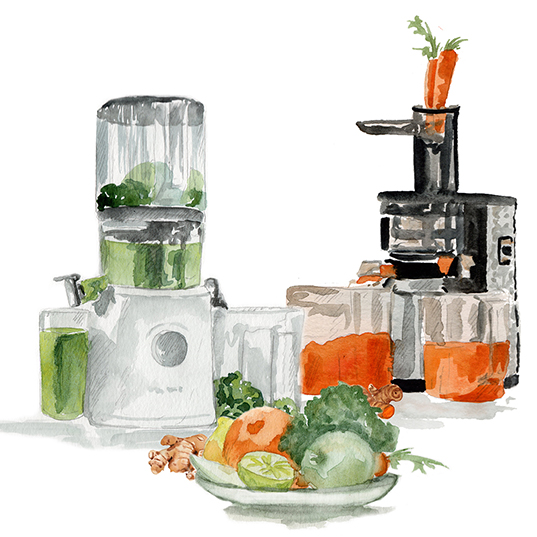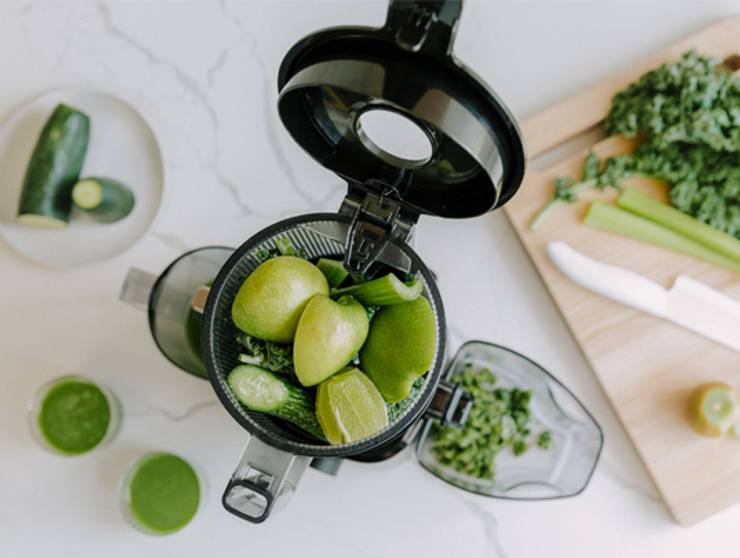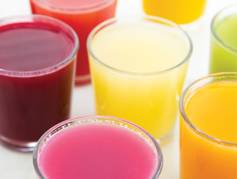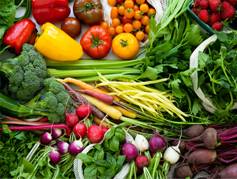Articles
Juicing Series Part 3: Which Type of Juicer is Right For You?
A Look At Cold Press vs Centrifugal Juicers
If you’re just getting started on your juicing journey, choosing a juicer can feel like a tall order. With so many models on the market, you might feel overwhelmed with where to start.
Before you shop, remember your why. Juicing provides a simple way to get several servings of fruits and vegetables, in a short amount of time. On top of that, you can flood your body with the nutrients and antioxidants it needs for optimal health and vitality.
Now on to the main two juicers: centrifugal and cold press machines. Here’s a short guide that shares the pros and cons of each to help you choose the model that best fits your needs.
“Fast” Juicing
If you’ve been juicing for a very long time, chances are you’ve tried a traditional centrifugal juicer. This is considered the “fast-method” of juicing. The centrifugal method uses a high-speed blade to shred fruits and vegetables. It usually involves a strainer screen to extract juice from the pulp. An example of a centrifugal juicer is the Breville Juice Fountain Compact.
THE PROS
Centrifugal juicing machines operate a fast speed. Some models can pulverize nearly whole foods in just a few seconds. This minimizes some of the prep work that goes into the chopping and dicing of your produce beforehand.
A centrifugal juicer is an easy-to-use machine that is often more affordable upfront. You can get started with this method for as little as $100. From there, you’ll just have to purchase the produce and occasional replacement discs, which run between $30-$60. This machine is great for beginners or occasional juicers.
THE CONS
As mentioned earlier, centrifugal juice is produced quick. The high-speed process can lead to separation and degradation of the juice. This means you’ll need to consume it quickly to avoid further break down.
With a centrifugal juicer, the solids and pulp from the produce can become so small they make their way into the juice. Additionally, the high-speed blade allows more air into the juice, making if foamier. This can change the texture and make the juice thicker. The quality and flavor tend to feel inferior to a slow juicer.
Not all produce is fit for a centrifugal juicer. Hard produce like carrots, celery and apples are a much better fit for the centrifugal method. These machines are not as effective at extracting juice from leafy greens like spinach, wheatgrass, or cilantro.
Another consideration is the price of your produce. If you’re paying good money for your produce, you’ll want to get the most out of your juicer.
Centrifugal juicers tend to have a lower yield. In contrast to a cold press machine, these models will require more produce to extract the same amount of juice. This can lead to added costs in the long run, especially if you juice often.
The high-speed blade and motor of a centrifugal juicer can make your juicing experience a loud one. The noise is often comparable to a noisy blender or food processor. This may not be a great fit if you’ve got sleeping family members or you’re in a rental unit.
CENTRIFUGAL JUICING SUMMARY
Pros:
| Cons:
|
“Slow” Juicing
Recently, cold press juicing has been gaining popularity. Cold press juicing is considered the “slow-method” of juicing from a technology standpoint. It doesn’t necessarily mean the process is slower to juice, but rather that the method uses a slow-spinning auger to grind the produce. Then, pressure is slowly applied to the produce to help squeeze the juice from the pulp. An example of a cold press juicer is the Nama J2 Cold Press Juicer.
THE PROS
When it comes to cold pressed juicers, the major benefit revolves around maintaining the nutrient integrity. Its low speed and lack of heat minimize oxidation. This helps keep the nutrients and flavor intact. Since the nutrient properties are maintained, you can store your juice for up to three days.
The cold press juicer generally produces a fresh juice that is consistent, bright and less foamy than a centrifugal juice. A cold press machine is going to give you the best tasting and most nutritious juice. This is great for picky eaters or those with texture sensitivities.
Cold press juicers tend to extract up to 30 percent more juice and Nama yields up to 60 percent more juice with leafy greens than its centrifugal counterpart. Since you can extract more juice with less produce, you’ll end up saving money in the long run. The extra juice yield makes this a great choice for families.
If you like to use a variety of different fruits and vegetables, a cold press juicer may be your best bet. This method is great for all types of fruits and vegetables, including leafy greens. Some models, like the Nama Vitality 5800 Cold Press Juicer and Nama J2, can even be used to make nut milks or sorbets.
Unlike the centrifugal models, a cold press juicer tends to be much quieter. Since this machine uses a pressing method over the high-speed blade, you get less noise. This makes it easier to do your juicing without disturbing those around you.
THE CONS
A cold press juicer may cost you more upfront. Compared to a centrifugal juicer, you could pay a couple hundred dollars more. This type of juicer may be less economical for someone who wants to juice a few times a year.
 artwork by thescribblist.com
artwork by thescribblist.com
COLD PRESS JUICING SUMMARY
Pros:
| Cons:
|
Summary
Buying a juicer can be a big decision. It’s important to weigh the pros and cons of each method to find the best fit for your household. No matter where you choose to begin, you’ll be taking a great step toward getting more fruits, vegetables, and micronutrients into your daily routine.
by: Stephanie Wagner
Article - January 2022
Stephanie Wagner has more than five years of experience as a Registered Dietitian and Functional Nutrition Coach.
- Choosing a selection results in a full page refresh.
- Press the space key then arrow keys to make a selection.



